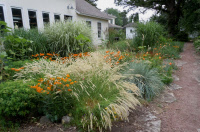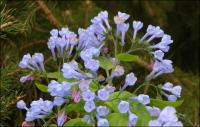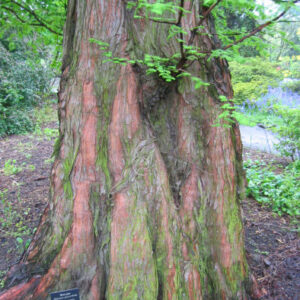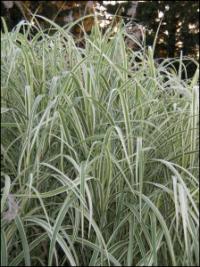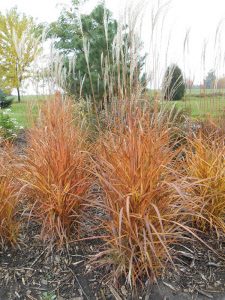Shop
Showing 505–512 of 788 results
-
Matteuccia struthiopteris Ostrich fern Z 3-7
Dissected, feathery fronds resemble ostrich plumes form vase-shaped clumps.
Dissected, feathery fronds resemble ostrich plumes form vase-shaped clumps.
Size: 3-4’ x 5-8’ spreading by rhizomes.
Care: part to full shade in moist well-drained to moist soil
Native: eastern No. America, Wisconsin nativeIn gardens before 1790. Matteuccia is named to honor Italian scientist Carlo Matteucci (1811-1866.) Struthiopteris comes from struthio meaning “ostrich” and pteris meaning “fern.” The fronds are edible – Vermont adopted this as its state vegetable.
-
Melampodium leucanthum Blackfoot daisy Z 5-10
No fail low mounds of up to 50 small white daisies spring-fall, atop narrow, hairy, grey-green leaves
ARCHIVED
Note: This is a plant not currently for sale. This is an archive page preserved for informational use.
No fail low mounds of up to 50 small white daisies spring-fall, atop narrow, hairy, grey-green leaves
Size: 6-10” x 12-20”
Care: sun to part-shade in well-drained soil. Its tap root reaches down for moisture and hair on foliage protects if from desiccating winds and sun - xeric plant
Native: Colorado, Oklahoma, TX &AZ (no wonder it likes well drained soil) but perfectly happy as far north as 20° below zero in winter.
Wildlife Value: birds eat seeds –pollen and nectar attract bees and butterflies. Deer resistantBotany professor John Riddell found this in Texas, Described in Flora of North America, 1842.
-
Melica ciliata Silky spike melic grass Z 5-9
Ornamental arching white spikes from June through mid-summer. Especially nice for its early bloom, long before most grasses.
Ornamental arching white spikes from June through mid-summer. Especially nice for its early bloom, long before most grasses.
Size: 2' x 12"
Care: full sun in moist well-drained to moist soil.
Native: Eurasia to North Africa
Wildlife Value: Deer resistantMelica is Greek for “sweet grass.” This species collected before 1753.
-
Mertensia virginica syn. Mertensia pulmonarioides Virginia bluebells Z 3-7
Clusters of pink buds turn to sky blue trumpets in May. Ephemeral, disappearing in summer to return next spring.
Available for purchase in Spring only
Clusters of pink buds turn to sky blue trumpets in May. Ephemeral, disappearing in summer to return next spring.
Size: 18" x 10" spreads slowly
Care: Moist well-drained soil in part shade.
Native: N.Y. to Tennessee, west to Kansas, Wisconsin native
Wildlife Value: Provides nectar and pollen to honeybees, bumble and mason bees, as well as Skipper butterflies and Sphynx moths. Deer resistant.
Awards: Royal Horticultural Society Award of Merit.Cherokee cured whooping cough and consumption with Virginia bluebells. Other Natives treated whooping cough, venereal disease, and plain poor health with this. First collected for gardens by John Banister in colonial Virginia C. 1690. Named Mertensia after Franz Karl Mertens (1764-1831), a German botanist who never set foot in America. Grown by both Washington and Jefferson.
-
Metasequoia glyptostroboides Dawn redwood Z 4-8
Fast-growing, pyramidal-shaped deciduous conifer.
Fast-growing, pyramidal-shaped deciduous conifer. The orange to brown trunk base tapers and thickens with up to a dozen large buttress-like root flares extending several feet up the trunk. Feathery, fern-like, soft foliage emerges light green in spring, and turns red-bronze in fall before dropping. Its branches are well-attached and make excellent climbing.
Size: 70-90’ x 15-25’
Care: sun in moist to moist well-drained, slightly acid soil
Native: Szechuan China
Awards: Royal Botanic Garden Award of Garden Merit, Yew Dell Botanical Gardens’ Theodore Klein Plant Awards & Pennsylvania Horticultural Society GoldFrom fossil records, dawn redwood is known to have existed as many as 50,000,000 years ago. However, it was not until 1941 that dawn redwood was first discovered growing in the wild near the town of Modaoqi China by Chinese forester, T. Kan. Seeds collected from the original site were made available to the Missouri Botanical Garden in 1947. Seedlings grown therefrom were planted in front of the Lehmann Building at MBG in 1952 where they have now developed into large mature trees (70’+ tall). Dawn redwood is a deciduous, coniferous tree that grows in a conical shape to 100’ tall. It is related to and closely resembles bald cypress (Taxodium) and redwood (Sequoia).
-
Minuartia larcifolia Larch leaf sandwort Z 5-8
White blooms May-June over needle-shaped foliage
ARCHIVED
Note: This is a plant not currently for sale. This is an archive page preserved for informational use.
White blooms May-June over needle-shaped foliage
Size: 4-5” x 12-15”
Care: sun to part shade in moist well-drained to well-drained soil
Native: Mountains from Austria to SpainCollected before 1753.
-
Miscanthus sinensis ‘Variegatus’ Striped Maiden grass Z 4-
Vertical white srtipes on 4' arching green grass blades, inflorescenses coppery russet in fall,
Vertical white srtipes on 4′ arching green grass blades, inflorescenses coppery russet in fall
Size: 6' x 4' clump forming
Care: Sun moist well-drained soil. Cut back in spring.
Native: S.E. AsiaMiscanthus is Greek meaning stem and flower. Mentioned in Man’yoshu, a Japanese anthology of poems written in the 8th century, where it symbolized the melancholy of autumn. This variegated form frequently used in Victorian bedding designs. American garden cultivation since late 1800’s. Recommended by Gertrude Jekyll, mother of mixed perennial borders, in 1908, for its “great white striped” foliage.
-
Miscanthus sinensis subsp. purpurascens syn. Miscanthus ‘Purpurascens’ Flame grass Z 4-9
Flame grass starts in spring tinged with red in the leaves, increasing as summer passes. By fall the leaves turn brilliant orange-red, darkening to burgundy by winter. It retains its color for a few months. Tassel-like inflorescences appear in late summer, opening into creamy plumes by fall. It is upright and clump-forming.
Flame grass starts in spring tinged with red in the leaves, increasing as summer passes. By fall the leaves turn brilliant orange-red, darkening to burgundy by winter. It retains its color for a few months. Tassel-like inflorescences appear in late summer, opening into creamy plumes by fall. It is upright and clump-forming.
Size: 4-5’ x 3-4’
Care: sun to part shade in any soil - sandy to clay soils. Cut back in late winter to spring.
Native: Japan
Wildlife Value: Deer resistant and tolerant of Walnut trees.Miscanthus is Greek meaning stem (“miskos) and flower (“anthos”). Miscanthus mentioned in Man’yoshu, a Japanese anthology of poems written in the 8th century, where it symbolized the melancholy of autumn. This specific plant described by Swedish botanist Nils Johan Andersson (1821-1880) in 1855 in Öfvers. Kongl. Vetensk.-Akad. Förh. 12:167.


